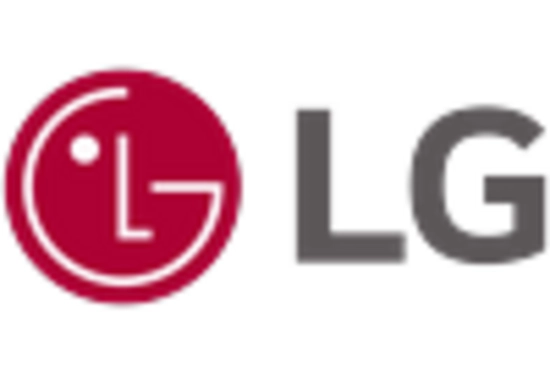Rising Energy Costs
The Cold Climate Heat Pump Market is significantly influenced by the rising costs of traditional energy sources. As fossil fuel prices continue to fluctuate, consumers are increasingly seeking alternative heating solutions that offer cost savings and energy efficiency. Cold climate heat pumps provide a viable option, as they utilize electricity to transfer heat rather than generating it through combustion. This shift not only reduces dependency on fossil fuels but also aligns with the growing trend towards renewable energy sources. Market data indicates that households using heat pumps can save up to 50% on heating bills compared to conventional systems. Consequently, the increasing energy costs are likely to drive more consumers towards adopting cold climate heat pumps, thereby propelling the market forward.
Government Incentives and Regulations
Government incentives play a crucial role in the Cold Climate Heat Pump Market by promoting the adoption of energy-efficient technologies. Various countries have implemented tax credits, rebates, and grants to encourage consumers to invest in heat pump systems. For example, certain regions offer financial incentives that can cover up to 30% of the installation costs. Additionally, stricter regulations on carbon emissions are pushing consumers and businesses to seek sustainable heating solutions. This regulatory environment is expected to bolster the market, as more individuals and organizations recognize the long-term savings and environmental benefits associated with cold climate heat pumps. The cumulative effect of these incentives is likely to accelerate the growth trajectory of the Cold Climate Heat Pump Market.
Environmental Concerns and Sustainability
The Cold Climate Heat Pump Market is also being propelled by heightened environmental concerns and a collective push towards sustainability. As awareness of climate change and its impacts grows, consumers are more inclined to choose heating solutions that minimize their carbon footprint. Cold climate heat pumps are recognized for their lower greenhouse gas emissions compared to traditional heating methods. This shift in consumer preference is supported by various environmental organizations advocating for energy-efficient technologies. Furthermore, the increasing availability of renewable energy sources, such as wind and solar, complements the use of heat pumps, enhancing their sustainability profile. As a result, the Cold Climate Heat Pump Market is likely to benefit from this growing emphasis on environmental responsibility.
Increased Consumer Awareness and Education
Consumer awareness and education are pivotal in shaping the Cold Climate Heat Pump Market. As more individuals become informed about the benefits of heat pumps, including their efficiency and cost-effectiveness, the demand for these systems is expected to rise. Educational campaigns and outreach programs by manufacturers and energy organizations are playing a vital role in disseminating information about the advantages of cold climate heat pumps. Market Research Future indicates that informed consumers are more likely to invest in energy-efficient technologies, leading to a potential increase in market penetration. This growing awareness is likely to foster a more competitive landscape within the Cold Climate Heat Pump Market, as companies strive to meet the evolving needs of consumers.
Technological Advancements in Cold Climate Heat Pumps
The Cold Climate Heat Pump Market is experiencing rapid technological advancements that enhance efficiency and performance. Innovations such as variable-speed compressors and advanced refrigerants are being integrated into heat pump systems, allowing them to operate effectively in lower temperatures. For instance, recent models can maintain heating capacities even at temperatures as low as -15 degrees Fahrenheit. This technological evolution not only improves energy efficiency but also reduces operational costs for consumers. As a result, the market is projected to grow significantly, with estimates suggesting a compound annual growth rate of over 10% in the coming years. These advancements are likely to attract both residential and commercial sectors, further driving the Cold Climate Heat Pump Market.

















Leave a Comment